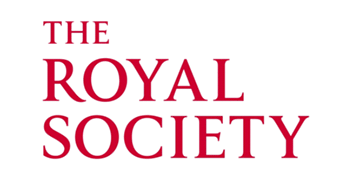
A key aspect of motor control includes our ability to grade how intense muscle contractions are, which translates to the relative degree of precision or vigor of movement. This capacity is largely encoded by specialized nerve cells in the spinal cord, called motoneurons, and their ‘recruitment’ believed to be a key mechanism for this control.

For a long time, it was believed that the size of the motoneurons determined how they are recruited. However, during the first phase of my postdoctoral work in the Miles Lab, I discovered that size is only part of the story. I identified novel roles for proteins called ion channels, in shaping the recruitment of motoneurons. Further, I also discovered that integration of these ion channels contributes to the emergence of orderly recruitment during early postnatal development in mice, which is a period of time where complex motor behaviors emerge (Sharples and Miles, 2021; Sharples et al., 2023).
Importantly, ion channels form prominent targets for modification by neuromodulators, thus creating a scenario to readily adapt motoneuron recruitment to adjust the relative degree of precision or vigor of movements. C boutons, derived from cholinergic V0c interneurons form a key modulatory input to motoneurons and act to augment motor output to increase movement vigor.
In collaboration with the Zagoraiou Lab, I studied how two C bouton-derived neuromodulators, acetylcholine and a novel peptide encoded by the Cocaine and Amphetamine Regulated Transcript (CART), regulate motoneuron excitability. I discovered that CART increases the recruitment of fast motoneurons, which are important for the generation of movements that require large amounts of muscle force. In contrast, muscarine, a drug that activates acetylcholine receptors, increases the firing rates of this same type of motoneuron, and did not alter their recruitment. Thus, two neuromodulators that are present at the same synapse can act to increase motor output by acting through distinct, but parallel mechanisms.

This work was recently published in the Proceedings of the National Academy of Sciences.
Ongoing work on motoneuron recruitment:
- Identifying novel channels that shape recruitment
- Neuromodulation of motoneuron recruitment
- Developmental roles for neuromodulators in establishing recruitment
- State-dependent recruitment of respiratory muscles
Outputs
Research Articles
Sharples, S.A., Broadhead, M.J., Gray, J.A., and Miles, G.B. (2023). M-type potassium currents differentially affect activation of motoneuron subtypes and tune recruitment gain. Journal of Physiology. 601 (24): 5751-5775. DOI: 10.1113/JP285348
Eleftheriadis, P.E.*, Pothakos, K.*, Sharples., S.A., Apostolou, P., Mina, M., Tetringa, E., Miles, G.B., and Zagoraiou, L. Peptidergic modulation of motor neuron output via CART signalling at C bouton synapses. Proc. Natl. Acad. Sci. 120 (39). e2300348120. DOI: 10.1073/pnas.2300348120.
Sharples, S.A. and Miles, G.B. (2021). Maturation of persistent and hyperpolarization-activated inward currents shapes the differential activation of motoneuron subtypes during postnatal development. eLife. 10: e71385. DOI: https://doi.org/10.7554/eLife.71385.
Selected Conferences and Abstracts
Sharples, S.A., and Miles, G.B. Fast motoneurons are not just ‘big’ slow motoneurons: roles for active properties in maintaining the orderly recruitment of motoneuron subtypes. Motor Systems Symposium. Salk Institute, La Jolla, CA, USA. November 2022. (Talk)
Sharples, S.A., and Miles, G.B. M-type potassium currents shape the recruitment of motoneuron subtypes. Society for Neuroscience. San Diego, CA, USA. November 2022. (Poster)
Sharples, S.A. and Miles, G.B. Postnatal integration of active properties shapes motoneuron recruitment. International Motoneuron Society Meeting. Banff, AB, Canada, June 2022. (Talk)
Sharples, S.A. Moving beyond the size principle: How the integration of active properties shapes motoneuron recruitment during postnatal development. The Online Motor Unit Seminar Series. February 2022. (Talk)
Sharples, S.A. and Miles, G.B. (2021). Persistent and hyperpolarization-activated inward currents shape fast and slow motoneuron recruitment during postnatal development. Poster presentation at the Society for Neuroscience, Chicago, IL, USA, November, 2021. (Poster)
Sharples, S.A., Sorrell, F.L., and Miles, G.B. (2019). Intrinsic property maturation drives the orderly recruitment of slow and fast lumbar motoneurons during postnatal development. Poster presentation at the Society for Neuroscience, Chicago, IL, USA, October 2019. (Poster)
Funding



